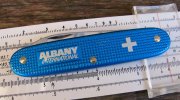dantzk8
Basic Member
- Joined
- Nov 1, 2005
- Messages
- 1,951
Thanks. I was planning to wait till fall to split it. Then use it next year at the earliest. I did a hickory a few years ago, and I waited about 4 or 5 months then too, til it started checking. I’ve never tried to split hickory that was old seasoned. I thought last time it split easier after waiting a while. It seemed the axe bounced off. I will give it a go again and see.
I use a fiskars splitting axe with 36” handle.
I’ve split some maple and I thought it split easier after it’d been seasoned a while. Same for river birch. Is it a species to species thing or is there a general rule?
I didn’t grow up harvesting wood and everyone I know buys it, so Im learning as I go.
Green or seasoned doesn't make much difference when splitting soft wood like birch.
For hard dense woods like horbeam or alder it does matter and it's much easier to split them when still green. Not to mention that the wood will dry better when split.
Dan.
Last edited:


